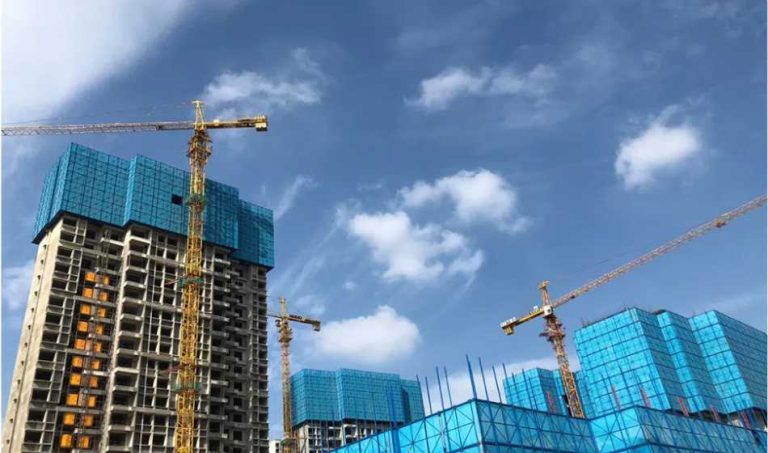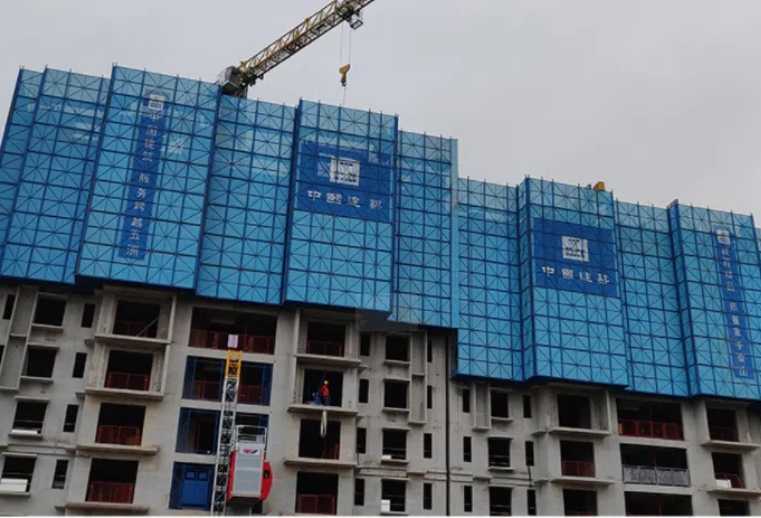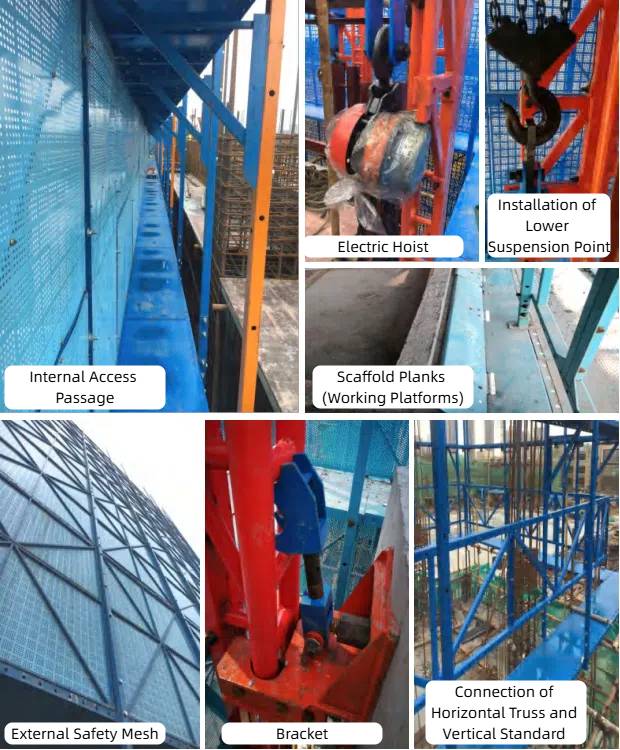




The system offers full-perimeter, floor-to-ceiling protection around the building’s edge, significantly reducing the risk of falls and accidents. It also serves as a wind barrier, protecting workers from harsh weather conditions and preventing tools or materials from falling off the building. Thus, it ensures compliance with strict safety regulations and creates a safer working environment.
The self-climbing mechanism—powered by hydraulic or electric systems—allows the platform to move upward along the building without crane assistance. This automation streamlines the construction process, enabling faster floor-to-floor progress. It also supports simultaneous operations (e.g., reinforcement, formwork, concrete pouring), significantly increasing productivity on-site.
Because the system climbs automatically and stays attached to the building throughout the project, there’s no need for repetitive assembly, dismantling, or repositioning between floors. This reduces labor input and associated costs. Additionally, freeing up cranes allows for more efficient resource allocation and reduces construction delays.
The enclosed platform creates a sheltered, secure workspace at height. Workers can operate safely and comfortably even in adverse weather, such as strong winds or light rain. This stability enhances worker productivity and maintains continuous progress on the upper floors, avoiding weather-related delays.
_看图王.jpg)
Self-climbing system(Protection platform), made of hot-dip galvanized steel, applies to construction. The system data is at a certain height and attached to the structure, made of. It relies on its elevating equipment to ascend or descend along the structure layer by layer. safety protection, anti-tilting, anti-falling and synchronous climbing. It consists of a platform structure of lifting structure, power equipment,anti-falling equipment, etc.
Vertical Standards – The main upright posts that form the load-bearing structure.
Diagonal Braces (Triangular Supports) – Used to enhance the stability and rigidity of the frame.
Working Platforms (Planks/Decks) – Provide walkable surfaces for workers and materials.
Secondary Panels and Flip Boards – Supplementary panels that enhance flexibility and adaptability during operations.
External Safety Mesh – Installed on the outer side for fall protection and debris containment.
Horizontal Support Trusses – Provide structural support across the frame and connect vertical elements.
